How To Load Film Into An Automatic Camera
The best moving picture scanners in 2022: give your cherished negatives and slides new life

The all-time film scanners are the best way to take your film into the digital realms. Whether y'all've got an attic full of quondam negatives, or you're a immature photographer who got their first SLR afterwards falling in love with picture photography on Instagram, a film scanner or flatbed scanner will fast become your best friend for sharing your shots online.
In this guide, nosotros're going to be looking at ii main types of scanner: dedicated film scanners, and general flatbed scanners. Motion-picture show scanners are designed specifically for handling negatives, which is always what you should be scanning from if possible. In that location are plenty of cheaper scanners that can get through rolls of negatives very quickly, or more expensive ones that will accept longer, but reward you lot with a high-quality file, resolving every point of grain.
A regular flatbed scanner, on the other paw, is more general-purpose, and tin can be useful if yous've got boxes of old slides or prints that y'all want to revitalise and bring into life. It'south also the better choice if you know yous're going to exist scanning other things equally well as picture, like documents. Be aware that if y'all're using a regular flatbed scanner, you may demand to pick up an boosted holder so that it tin can keep the pic completely flat. This is hugely important when information technology comes to scanning film!
• See also Best scanners for documents & photograph prints | Best VHS to DVD converters
Hither we've picked out ten scanners for your film negatives and slides. Whether you lot're shooting colour or black and white, these will allow you to vividly digitise your images. We've included scanners that will scan 35mm picture, 120 medium format, 5x4 sheet picture show and more, so whatever your preferred medium, yous'll take options. We've also fabricated certain to embrace a range of price points, so there are professional-level Epson scanners, and affordable upstarts like the Kickstarter-funded Pixl-latr.
Once you've got your scanner working, you may find yourself with the urge to start shooting moving-picture show again; check out our guide to the best moving picture to buy. We've also got a guide to the best picture show cameras effectually likewise if you need a new SLR or large-format camera. There'south a huge used camera marketplace and a surprising amount of know-how and expertise around classic pic cameras.
The best film scanners in 2022
So what'south the best film scanner? Right now, nosotros call back it'south the OpticFilm 8100 from film scanning practiced Plustek: it extracts phenomenal levels of detail from your film, is backed up by excellent included scanning software, and it's sensibly priced. We dearest information technology. If you lot're later something that'll scan multiple film frames automatically, though, and has the versatility to scan photograph prints and documents, Epson's Perfection V600 Photo flatbed scanner is a great selection.
If you desire something affordable and have a digital photographic camera already, and so check out the Pixl-latr. Bachelor at a fraction of the toll of the other scanners, information technology provides a secure means of illuminating and holding your motion-picture show and so that you lot tin scan it with a DSLR or mirrorless camera (and ideally a macro lens).
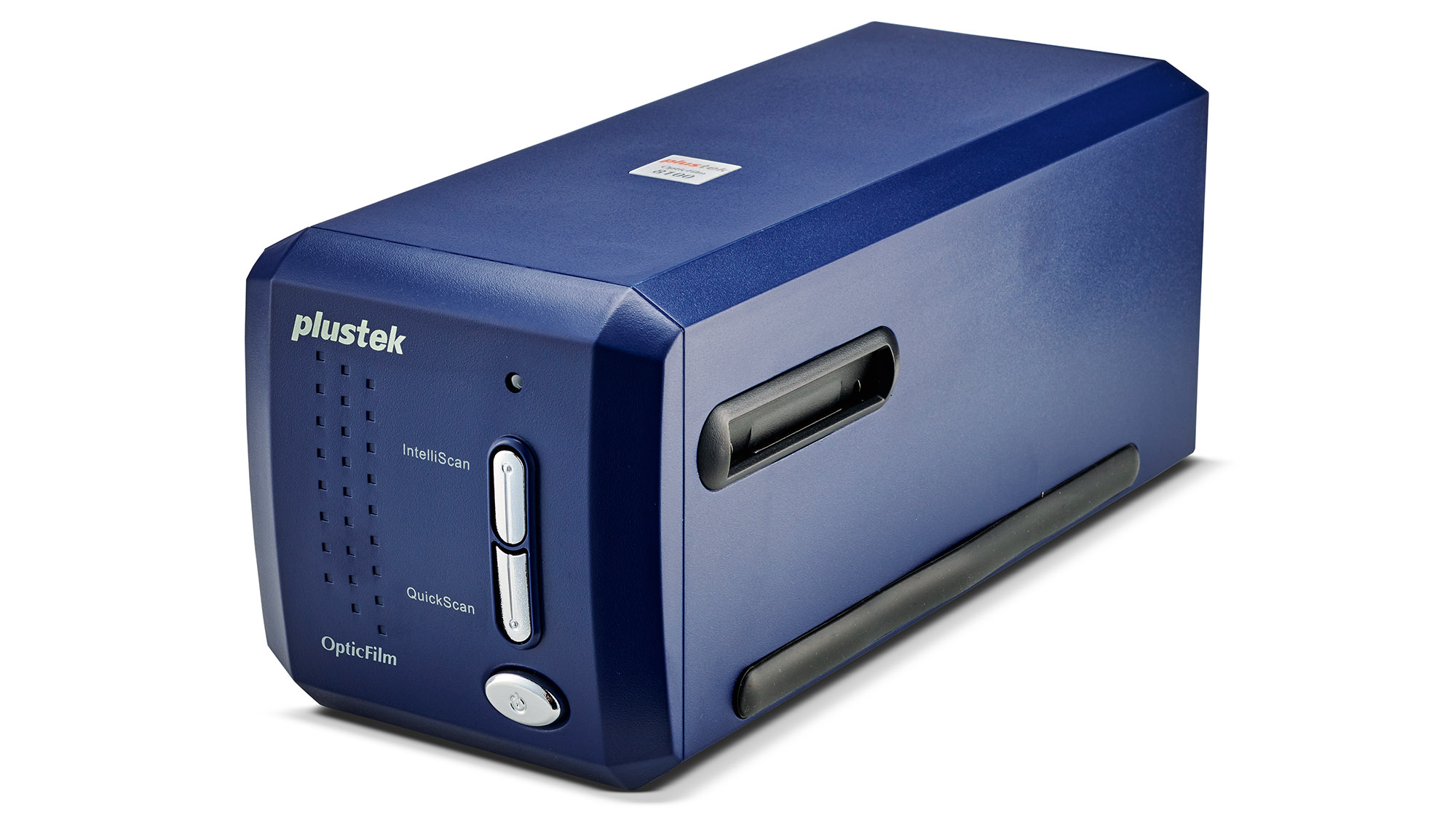

This is the babe of the OpticFilm range, yet it nevertheless boasts a respectable vii,200dpi maximum scanning resolution. It's also a real optical film scanner and not just a digital photographic camera sensor in a scanner body. This does however mean the 8100 is no speed demon. Each 35mm film frame takes nearly iv minutes to scan at max res, only 3,600dpi is more than adequate for most film stocks and you'll accept a scanned frame in one minute 20 seconds.
Though the front panel has a QuickScan button that automatically scans and saves a frame to you lot computer desktop, it's all-time to load upward the arranged SilverFast software that provides comprehensive scanning options and pre-scan image enhancement. Even without messing with the settings, and scanning at 3,600dpi, the 8100 is in a league of its own for scan quality, extracting bags of particular from our 35mm negs and transparencies. It also lets y'all scan the entire film frame with no overzealous cropping. The 8100 can struggle to reveal every particular in the shadow areas of high-contrast 35mm slide positives, merely this is our simply nitpick.
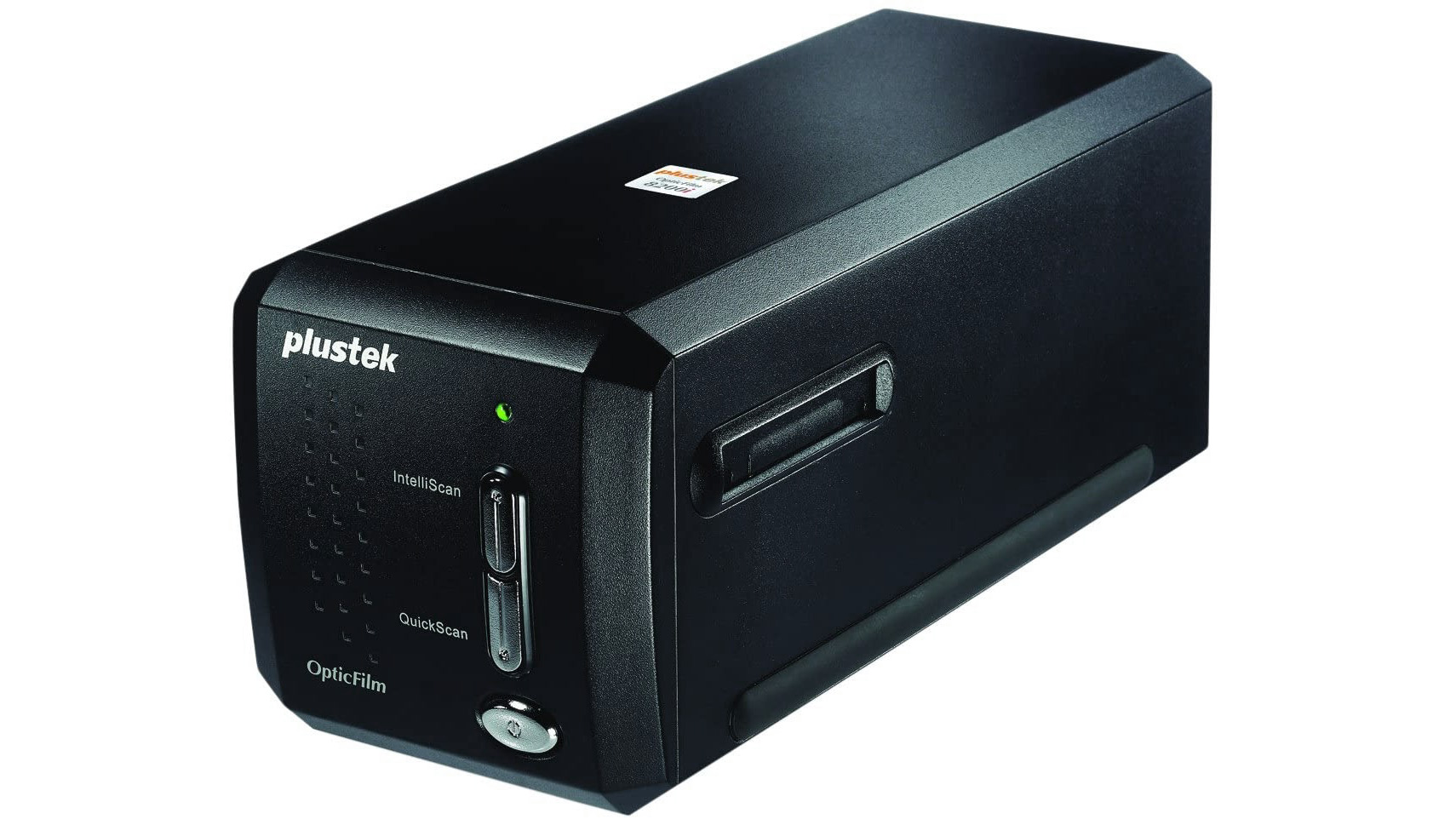
Apart from its black rather than blueish end, the OpticFilm 8200i SE could be mistaken from its babe 8100 sibling. It's almost identical on this within too, but that'southward no bad thing, as that means you're assured top-notch scanning quality, providing you're prepared to expect a while when using max 7200dpi scanning resolution.
There'south actually simply one key characteristic that separates the 8200i SE from the 8100, and that'southward its defended infra crimson scanning channel. Combined with the iSRD feature in the bundled SilverFast scanning software, whatever grit and scratches on your negs are automatically detected and and then removed from the digital scan - clever stuff.
The downside? In some places, the 8200i SE tin price around 40% more than the 8100, making it rather less of a deal. Merely if y'all regularly scan multiple negs that are likely to demand dust and scratch removal, then the 8200i SE could be a existent fourth dimension-saver and worth the premium. The price departure between the two scanners is smaller in the U.s.a., making the extra convenience of the 8200i SE very tempting.
There is also a Plustek OpticFilm 8200i Ai available, a flagship model that adds color calibration software into the parcel - useful for color transparency scanning, albeit at a college price.
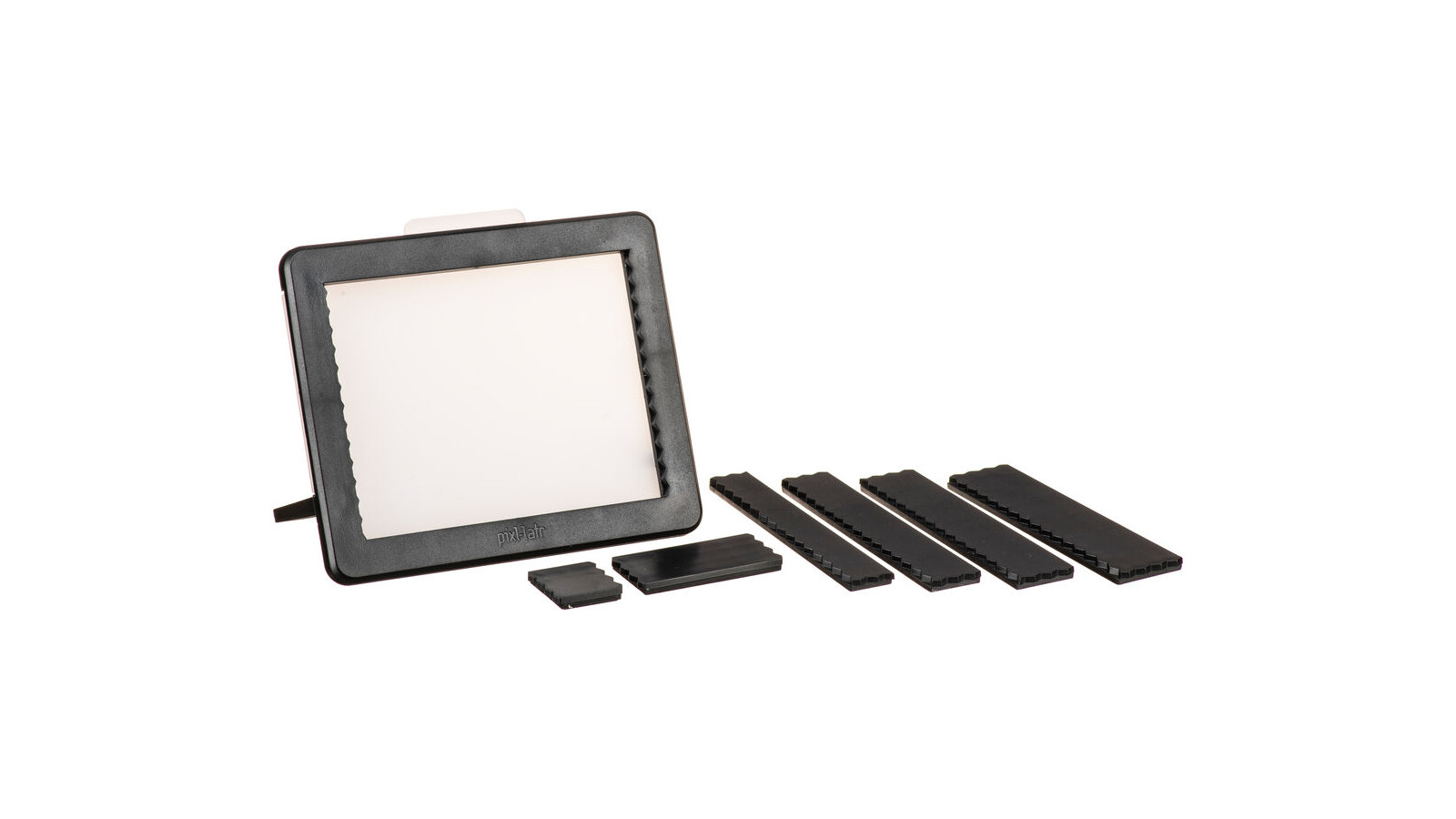
Equally you tin meet from a glance at this listing, picture scanning tin can be an expensive process. The PIxl-latr is one of the most contempo devices aiming at disrupting the market; information technology's more a scanning-assistant device than a scanner, requiring a lightbox and a camera with a good lens in lodge to work. Substantially it holds your film apartment confronting a translucent diffuser, assuasive you to evenly distribute low-cal across the picture plane for a smooth, even browse.
Equally mentioned, a lightbox is the best choice for low-cal source, though if yous're in a tight spot pretty much anything volition do, from a bedside lamp to a tablet with its screen brightness turned all the way upward. Pixl-latr offers a number of 3D-printed parts for helping you go the virtually out of the production, such every bit holders designed specifically for certain sizes of slide. Yous'll go all-time results from a macro lens, but again, if yous don't accept i, a decent 24-70mm will work.
It's not the fastest way to scan film, and if you have a lot of rolls to procedure, you might want something a bit snappier. Merely its asking price of about $l makes it the most affordable option by far, and the results you can get with it make information technology fantastic value for money.

We couldn't have a listing of the best film scanners without including Plustek'southward flagship viii-series model, the 8200i Ai. Information technology looks identical to the cheaper 8200i SE (at #ii), and for the most part it is indeed the aforementioned scanner, which ways you lot get the same clever infra-red dust detection and removal tech, also as top-notch scanning qualiy.
The 8200i AI differentiates itself primarily past including more avant-garde SilverFast Ai Studio software. This packs pro-grade scanning customisation features like a 16-bit histogram for a clearer, more true-to-life preview of scan quality. At that place's also an Expert Mode if y'all desire to spend a little actress fourth dimension fine tuning browse quality settings or utilise protecting layers. The Ai Studio software even includes an IT8 color calibration target to ensure colors in the digital scan preview, the scan itself and a impress of that scan all friction match each other
Naturally, these extra features command a significant toll premium over the 8200i SE, so if y'all don't intend to delve into advanced scanning settings each time you wan to digitize some negs or slides, the actress outlay is tough to justify. However, if you really want to ensure those cherished memories are scanned equally perfectly as possible, and you've got the time to practise the necessary fine tuning, the OpticFilm 8200i AI could be for you lot.
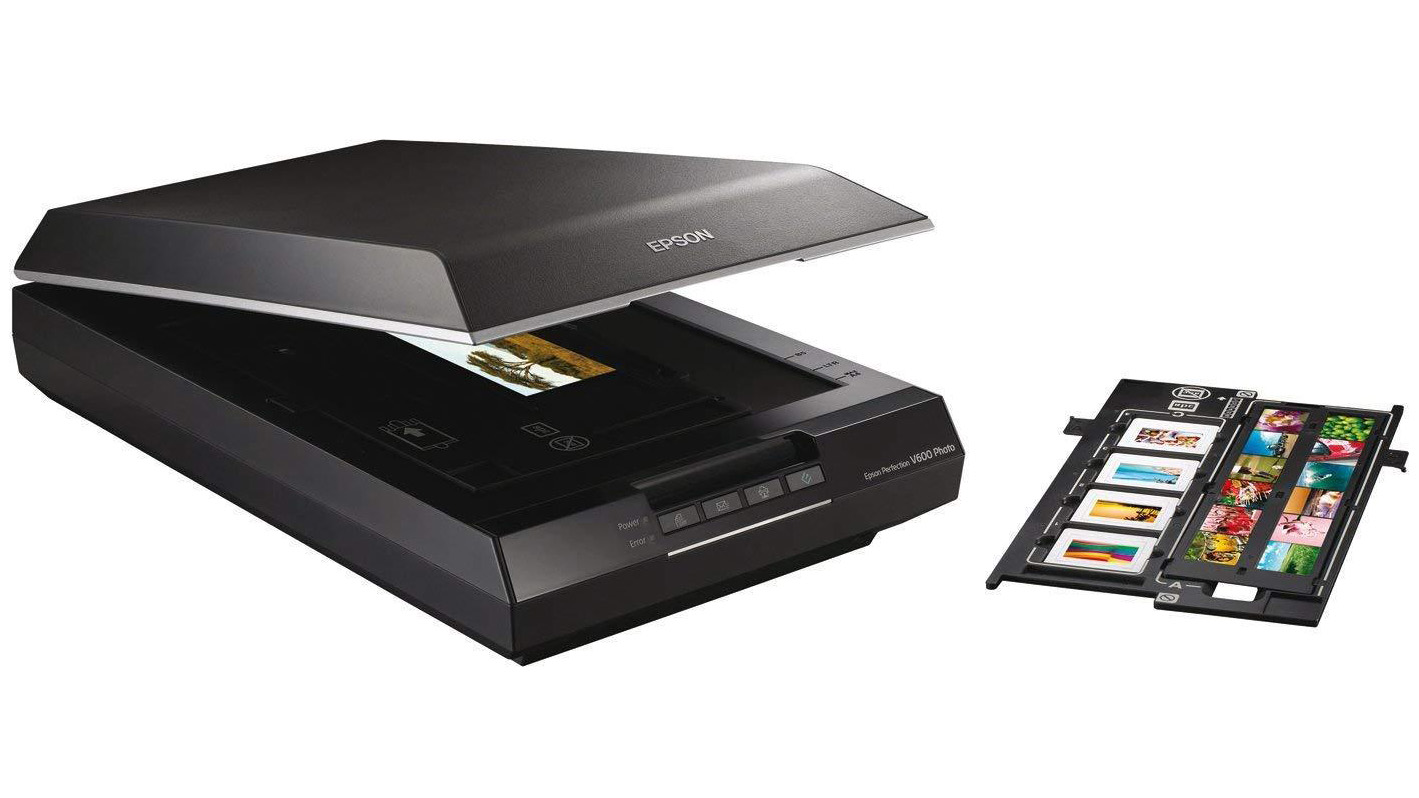
Flatbed scanners are traditionally thought of as a more versatile just less finessed alternative to a dedicated film scanner. However, the V600 is impressively designed to cater to film photographers. Naturally it can browse photos and documents, but it includes holders for 35mm film, 35mm slides, and 120/220 medium format picture show.
Scanning resolution can become as loftier equally a whopping 12,800dpi, simply you lot'll probable find 3,200dpi more plenty for your film stocks, producing a digitized paradigm equivalent to around 12.2MP. You might imagine that laying out upwards to a dozen 35mm film frames over the flatbed would upshot in fast scanning, only the V600 Photo still scans each frame individually – albeit automatically – and takes effectually one minute per frame at 3,200dpi. Scanning with Digital ICE automatic grit and scratch removal enabled but adds effectually 20 seconds per frame.
Results are superior to the Plustek OpticFilm 135 dedicated film scanner, with noticeably more item, plus improve default color and dissimilarity. All the same the V600 tin't match the top-ranking Opticfilm 8100's ability to excerpt every speck of detail.
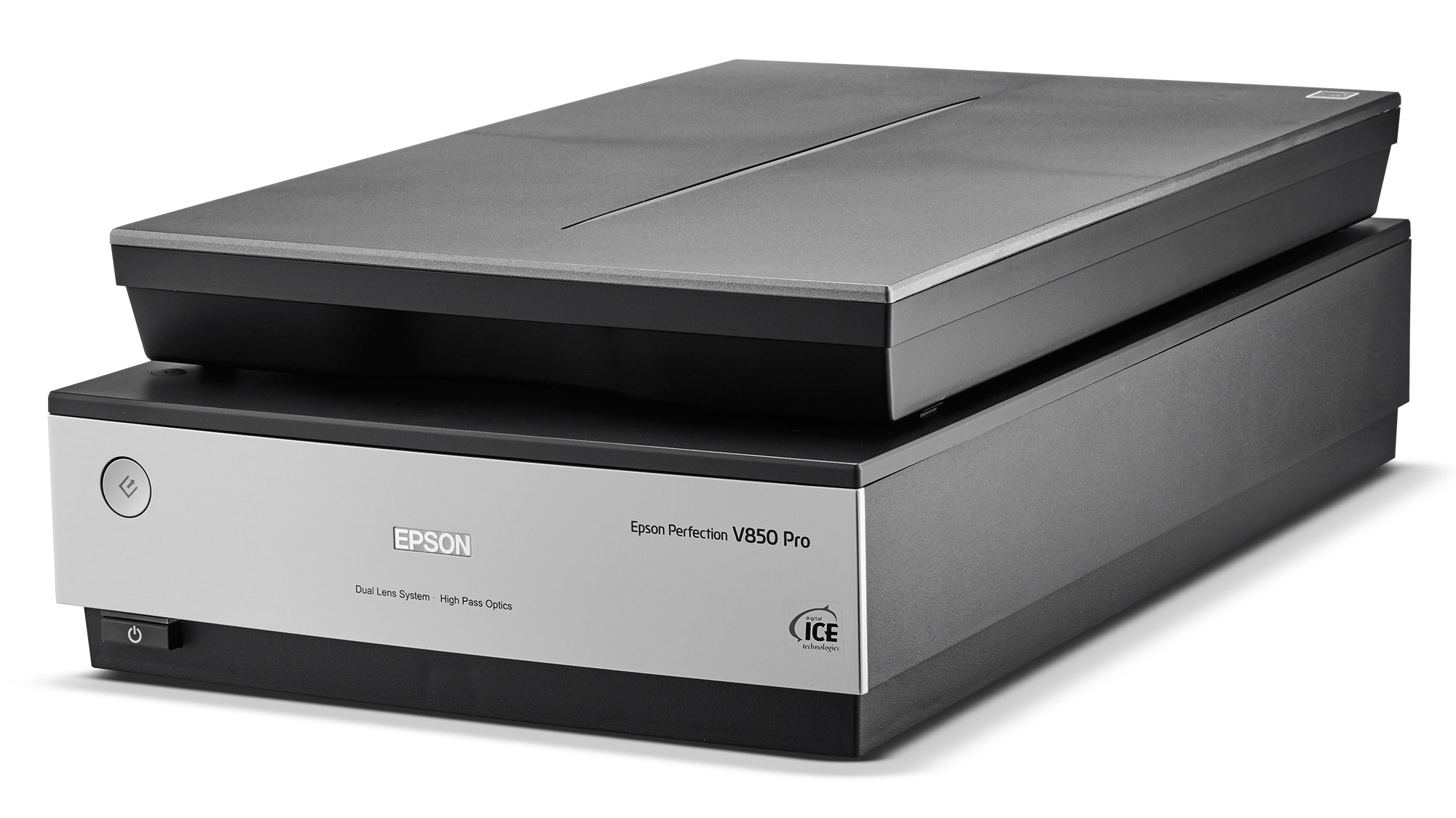
Positioned at the acme of Epson'due south scanner range, the V850 Pro is aimed squarely at motion-picture show fanatics wanting the all-time possible conversion to digital images. Its heart-opening cost tag is a result of a dedicated scanning lens designed specially for film, and information technology being bundled with not ane but 2 sets of picture show holders. The 35mm film strip and 35mm slide holders are an observable stride up in quality from those included with the V600 Photo.
The scanner itself is besides an absolute beast and feels like a premium product. Like the V600, resolution tops out at 12,800dpi, just over again, information technology'south rare you'll need such extreme resolving power. At 3,200dpi, the V850 does not perform significantly faster than the V600, but step upward to higher resolutions and this top-tier model pulls ahead, taking just 2 minutes thirty seconds to browse a 35mm frame at 12,800 dpi.
However at that place's precious lilliputian to separate the V850 from the V600 when it comes to scan quality. Both deliver excellent results that are almost indistinguishable, making the V850's hefty price premium tough to justify unless yous'll really benefit from its extra high-res scanning speed.
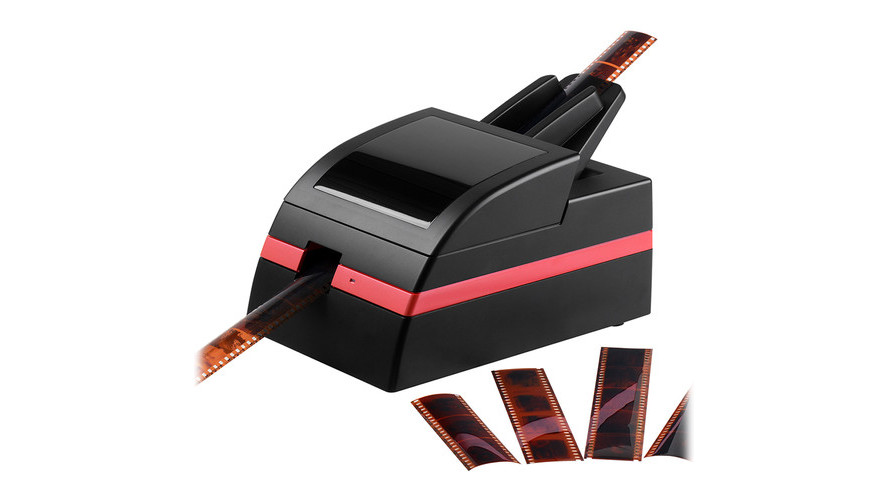
If you have a lot of 35mm film to batch scan, the Pacific Epitome PowerFilm Scanner is the fashion to get the task done. It'due south a beast of a scanner that does basically ane job but does information technology exceptionally well and efficiently. Simply load your unmounted strips and it'll scan up to ten of them with a single command. You lot also have a pick between high-resolution 24MP scans or quicker 6MP scans if you don't demand every image in pristine quality. These quicker scans can take as little every bit 24 seconds each, so this is an ideal manner to digitize an annal as efficiently every bit possible.
All this talk of efficiency does belie the fact that the Pacific Epitome PowerFilm Scanner is also very good at what it does, producing images of excellent detail and quality. Pacific Epitome'southward proprietary infrared cleaning applied science, MagicTouch, also works to remove dust and blemishes for a make clean final image that's set for press. A fantastic tool for working through an annal.
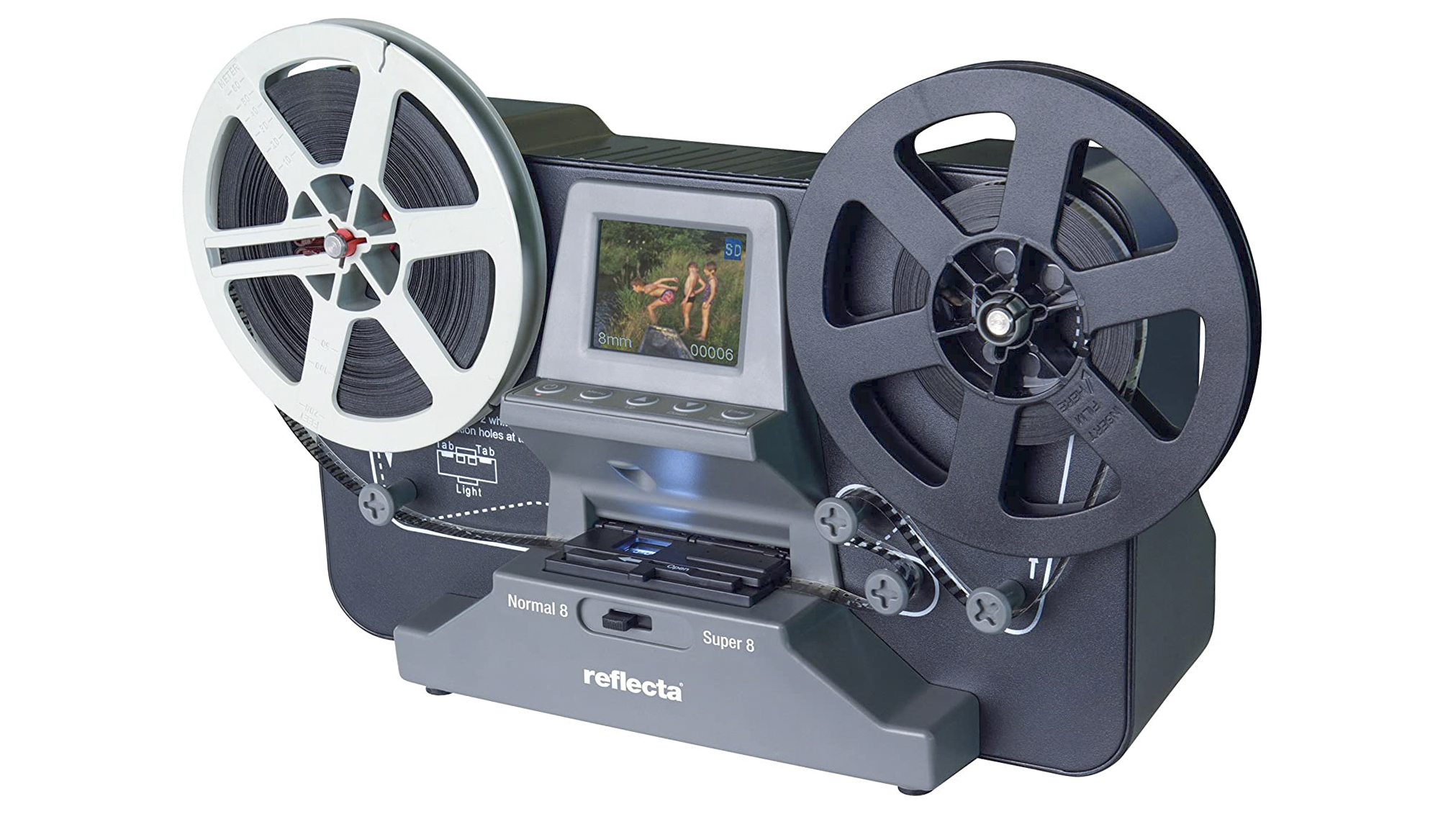
Digitizing old reels of cinematics movie used to be much more than complicated, as you needed to find a working projector, besides equally a video photographic camera and a screen. But this ingenious device does it all in 1 – allowing you to convert your Super 8 and normal 8mm cine films into MP4 digital files. Sold nether the Reflecta, Magnasonic or Eyesen make names (depending where you store), it converts film on 7in, 5in or 3in reels – and saves the output onto SD retentivity cards. There is a modest two.3in LCD so y'all can see the film before and during recording.
Scanning is done at 2 frames per second – so a 3-inch l-foot reel will have about half an hour to digitize. One time recorded, the unit can playback the footage to your Goggle box and so everyone can run across information technology on the big screen. Unfortunately in that location is no support for audio, and so if the picture show has a soundtrack this is not recorded.
5 things to look for in a motion-picture show scanner
1. Pixel perfect
Don't be swayed by sky-high scanning resolutions. Unless you're digitizing extremely irksome movie speed, 3,200dpi will be more than enough. Film does not have the aforementioned resolving power as today'southward sensors.
two. Moving-picture show or flatbed?
Defended movie scanners can offering impressive epitome quality, but a decent flatbed scanner offers extra versatility and scanning convenience.
3. Software features
If yous want the best possible results, adept scanning software is a must. It'll let you lot fine tune every chemical element of the scanning process.
4. Ease of apply
Standalone film scanners that save directly to a memory carte are great for convenience, but don't expect the image quality to be anything special.
v. Hold on tight
Cheaper scanners can often exist let down be tacky film holders that are tricky to use and can compromise the quality of the final epitome.
Also read:
- The best motion picture cameras today
- The best 35mm film, roll film and canvass motion-picture show
- All-time slide viewers
- All-time darkroom equipment: enlargers, processing tanks and print trays
- Best scanners for documents & photos
- Best book scanners
- The best camcorders
- How to scan film
- The all-time photo printing online
Related manufactures
Source: https://www.digitalcameraworld.com/au/buying-guides/the-best-film-scanners
Posted by: hancockmanote.blogspot.com

0 Response to "How To Load Film Into An Automatic Camera"
Post a Comment